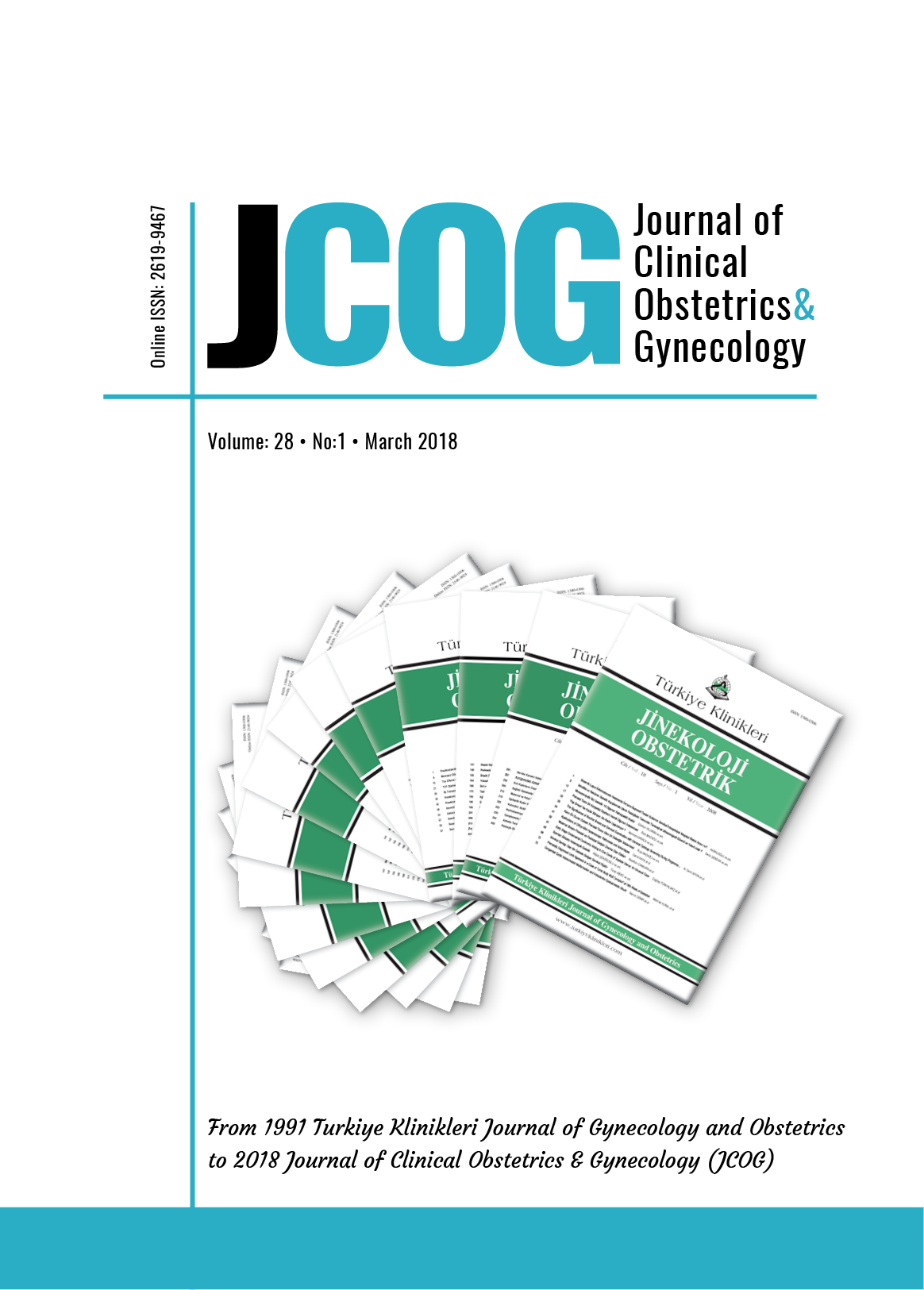Open Access
Peer Reviewed
ORIGINAL RESEARCH
2543 Viewed1606 Downloaded
The Prevalence of Hydatids of Morgagni in Surgically Managed Patients with Gynecological Conditions
J Clin Obstet Gynecol. 2018;28(1):15-9
DOI: 10.5336/jcog.2017-56582
Article Language: EN
Article Language: EN
Copyright Ⓒ 2025 by Türkiye Klinikleri. This is an open access article under the CC BY-NC-ND license (http://creativecommons.org/licenses/by-nc-nd/4.0/)
ABSTRACT
Objective: To determine the prevalence of hydatid of Morgagni (HM) and describe its clinical features in patients with gynecological conditions. Material and Methods: A prospective study was designed to investigate the prevalence of HM. The patients who underwent diagnostic or surgical procedures like laparotomy and laparoscopy to visualize the fallopian tubes for malignant or benign obstetrical/gynecological conditions at a tertiary referral health care from January 2015 to October 2016 were included in the study. We defined HM based on the direct visualization of the tubes at the time of surgery. Results: A total of 1,361 patients, 1,066 (78.3%) premenopausal and 295 (21.7%) postmenopausal, were included in this study. The mean age was 39.3 ±14.7 years (range 18-80 years). The overall prevalence of HM was 17.2% (n = 235) and that in premenopausal and postmenopausal women was 18.9% and 11.5%, respectively. HM prevalence was significantly higher among premenopausal women compared to postmenopausal women (p = 0.003). The majority (~96%) of the HMs were ¡Ü 1 cm and in only three cases (0.2%) the HM exceeded 2 cm in diameter. Conclusion: A systematic examination and appraisal of the adnexa during pelvic surgery may help in accurately identifying such common cysts. The direct evaluation of the fallopian tubes seems to be the best method to determine the prevalence of HM since most cysts are < 1 cm in diameter. Since the prevalence of HM decreased after menopause, their development may be stimulated by hormones.
Objective: To determine the prevalence of hydatid of Morgagni (HM) and describe its clinical features in patients with gynecological conditions. Material and Methods: A prospective study was designed to investigate the prevalence of HM. The patients who underwent diagnostic or surgical procedures like laparotomy and laparoscopy to visualize the fallopian tubes for malignant or benign obstetrical/gynecological conditions at a tertiary referral health care from January 2015 to October 2016 were included in the study. We defined HM based on the direct visualization of the tubes at the time of surgery. Results: A total of 1,361 patients, 1,066 (78.3%) premenopausal and 295 (21.7%) postmenopausal, were included in this study. The mean age was 39.3 ±14.7 years (range 18-80 years). The overall prevalence of HM was 17.2% (n = 235) and that in premenopausal and postmenopausal women was 18.9% and 11.5%, respectively. HM prevalence was significantly higher among premenopausal women compared to postmenopausal women (p = 0.003). The majority (~96%) of the HMs were ¡Ü 1 cm and in only three cases (0.2%) the HM exceeded 2 cm in diameter. Conclusion: A systematic examination and appraisal of the adnexa during pelvic surgery may help in accurately identifying such common cysts. The direct evaluation of the fallopian tubes seems to be the best method to determine the prevalence of HM since most cysts are < 1 cm in diameter. Since the prevalence of HM decreased after menopause, their development may be stimulated by hormones.
MENU
POPULAR ARTICLES
MOST DOWNLOADED ARTICLES





This journal is licensed under a Creative Commons Attribution-NonCommercial-NoDerivatives 4.0 International License.










